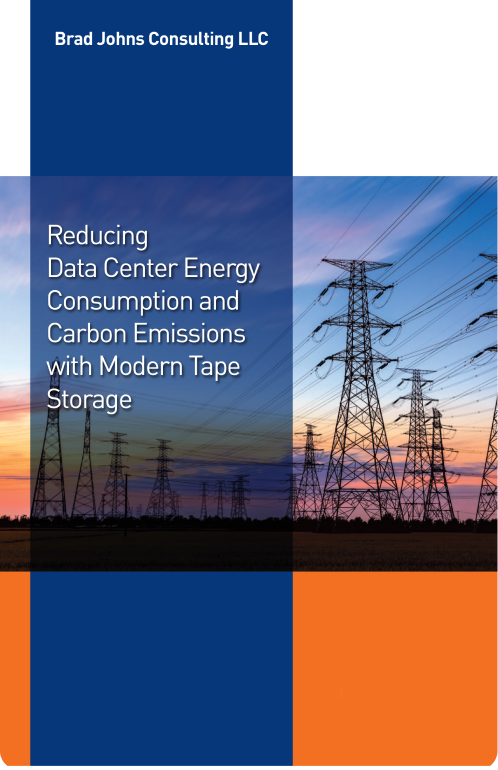Want to find out how you can reduce carbon emissions, save money and still store all your data securely? Discover the actual cost - in dollars and environmental impact - of data storage and how modern tape solutions can change the game for your business and the global environment.


Understand Issues Surrounding Global Warming
Learn about the issues surrounding global warming, what enterprises are doing to reduce carbon emissions and why data centers are a key target of sustainability initiatives.

Learn How to Lower Carbon Emissions
Learn how your business can lower your carbon emissions by moving petabytes of “cold data” from disk to tape.

Learn How to Reduce Total Cost of Ownership
Learn how tape can help reduce the total cost of ownership (TCO) for your business’s long-term data storage.
Hard disks take a lot of energy.
Almost 2% of electricity in the United States goes to powering data centers. Close to a fifth of all power used by data centers is linked to storage.
Hard disk drives constantly spinning 24/7 are energy intensive and a primary driver of energy consumption.
Most stored data is "cold."
Cold data refers to information that needs to be stored but isn't regularly used.
Estimates are that at least 60% of stored data in the nation is infrequently used, which means it could be archived off of disks and onto more affordable, environmentally friendly technologies.
Sustainability is a growing concern.
In light of growing climate change concerns, companies and governments across the globe are seeking to reduce carbon emissions and support more sustainable processes. Amazon pledged $2 billion to support sustainable tech, Verizon is working to have a neutral carbon footprint by 2035 and Walmart has launched a major initiative to reduce greenhouse gasses, just to name a few.
Using tape storage can reduce carbon emissions.
Moving just "cold data" to tape can drastically reduce a company or data center's carbon emissions.
Using an example of 10 PB of cold data and a growth rate for that data of 35% annually, the carbon emissions savings by migrating it to tape is 87%.
Check out the 2021 Technology Update on Tape Storage for more information about its benefits.
Data centers consume around 1.8% of all the electricity used in the United States. According to the U.S. Energy Information Administration, the total electrical consumption in the United States in 2020 was 3.8 trillion kWh.
Taking 1.8% of 3.8 trillion leaves you with 68.4 billion kWh. The average American home uses around 10,650 kWh of electricity annually. So data centers consume around the same amount of energy as 6.4 million homes every year.
Tape storage reduces carbon emissions because data tapes spend most of their lifecycle idle in a library slot or in a vault and don’t consume energy unless being read from or written to in a tape drive. Tape is much more efficient and requires less energy than more active servers and disk-based methods of storing data. As for the practical applications, most enterprises would do best to move cold data to tape. This drastically reduces how much data is being stored via methods that have higher carbon emissions and energy consumption while supporting secure archiving of critical data and access to that data when necessary.
On top of reducing costs related to energy consumption, tape storage helps reduce data ownership costs because it's less expensive overall than other methods. For example, in a scenario where 10 PB of cold data, growing at 35% annually, is archived to tape rather than held on hard or solid-state drives in a data center, the savings is as much as $29 million over a decade.